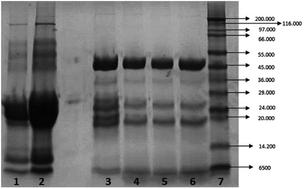In vitro digestibility of goat milk and kefir with a new standardised static digestion method (INFOGEST cost action) and bioactivities of the resultant peptides
Abstract
The hydrolysis degrees of goat milk and kefir during simulated gastrointestinal digestion and some bioactivities of the resulting peptides after fermentation and digestion were studied. A static in vitro digestion method by the COST FA1005 Action INFOGEST was used and goat milk and kefir were partially hydrolyzed during the gastric phase and had above 80% hydrolysis after duodenal digestion. There were no differences between the digestibility of goat milk and kefir (p > 0.05). Goat milk and kefir displayed about 7-fold antioxidant activity after digestion (p < 0.05). Fermentation showed no effect on the calcium-binding capacity of the samples (p > 0.05), however, after in vitro digestion calcium-binding capacity of the goat milk and kefir increased 2 and 5 fold, respectively (p < 0.05). Digested goat milk and kefir showed a higher dose-dependent inhibitory effect on α-amylase compared to undigested samples (p < 0.05). α-Glucosidase inhibitory activities and in vitro bile acid-binding capacities of the samples were not determined at the studied concentrations.


 Please wait while we load your content...
Please wait while we load your content...